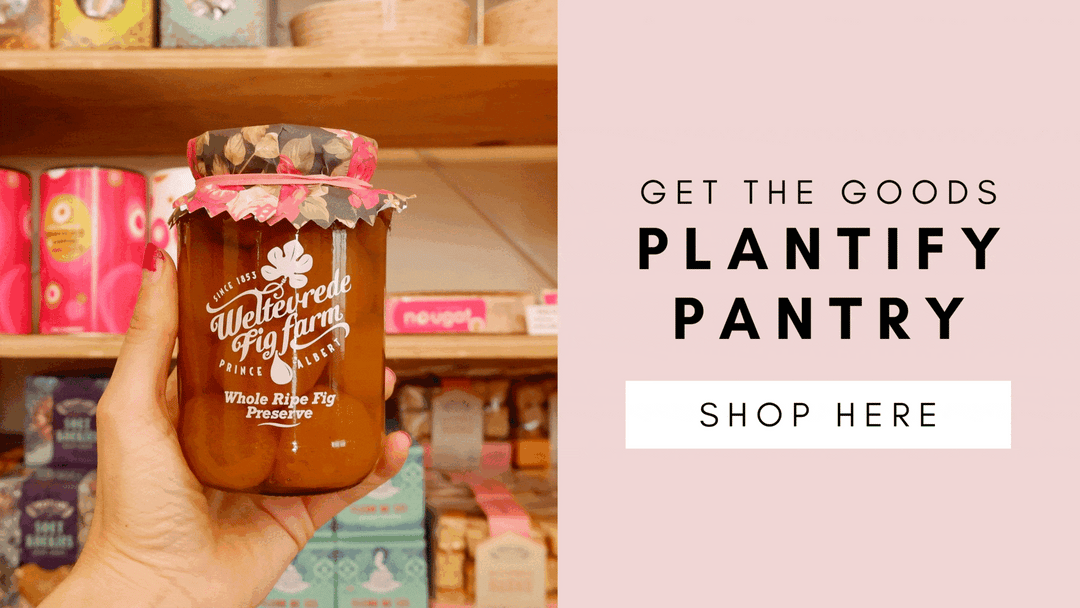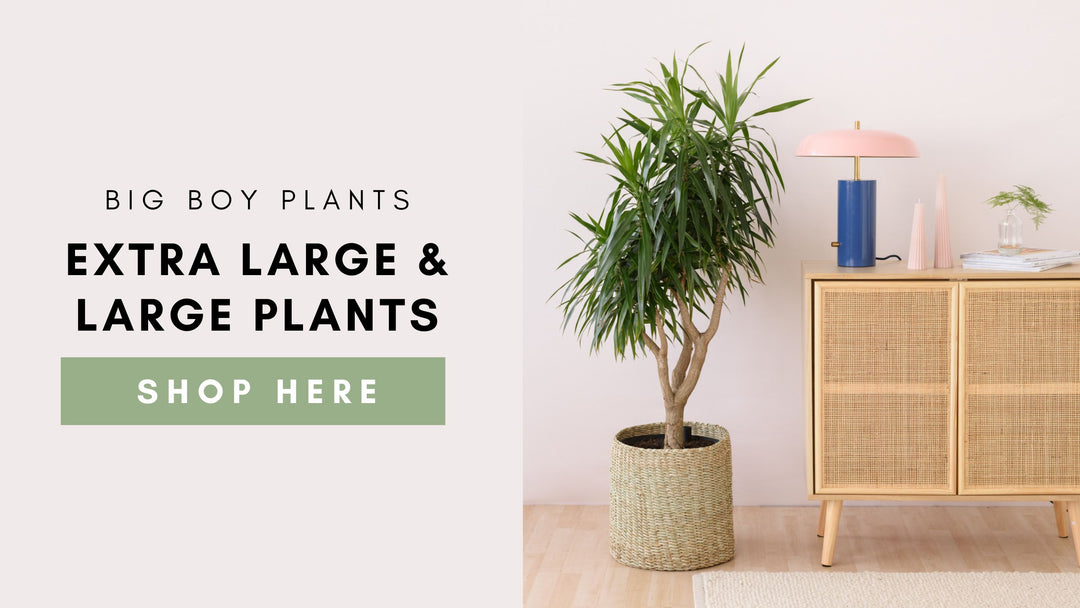Spekboom Care Instructions
Scientific name: Portulacaria afra
Synonyms: Spekboom, Bacon Tree, Pork Bush, Elephant’s Food, Elephant Bush, Dwarf Jade Plant.
Portulacaria afra is an easy-going succulent that has an attractive growth habit, with small green succulent leaves on a red coloured stem. It is sometimes referred to as a ‘dwarf jade’ plant due to its appearance but is in actual fact not related to the Crassula genus, and is rather part of the Didiereaceae plant family.
Spekboom has become renowned for its ability to absorb large quantities of Carbon Monoxide, making it a fantastic houseplant for its air-purifying qualities.
These glorious plants are indigenous to Southern Africa and found in many a home garden, prized for their hardy drought-tolerant and sun-loving beauty. They are also often used as a Spekboom hedge due to their dense growth habit and evergreen elegance. As an indoor plant, Portulacaria afra is favoured as a low maintenance, waterwise ornamental piece, especially for those hot bright corners where little else survives.
Note: This plant is pet friendly and safe for people that like to nibble…it’s actually edible and used in salads or as a cocktail garnish (just wash before use!). Elephants also enjoy it… hence its nickname ‘elephant’s food’.
Common Spekboom Symptoms
- Scorched yellowing foliage: Your Spekboom is getting too much direct bright, intense light; possibly through a window that may be magnifying the intensity of the sun. We recommend moving it to somewhere with less intense light - indirect light is best for growing these as houseplants.
- Dropping leaves: The main cause of leaf drop in the Elephant Bush is a sudden temperature fluctuation or being placed in a cold, draughty position, or too close to a heat source. Ideally, this houseplant needs consistent warmth to thrive.
- Limp, brown or wilting leaves: This is a sign of a watering issue and could be a result of either root rot or prolonged under watering. Overwatering is often indicated by softy mushy stems or when re-potting brown mushy roots. Underwatering is often shown by wrinkling foliage and crisp dry roots. If you suspect overwatering is the cause, we recommend taking stem cuttings of your Portulacaria afra and rooting these in potting mix as detailed below. However, if under watering is the cause, we'd suggest, watering more regularly, allowing the soil to dry well between each watering, however, avoid prolonged periods of dryness.
- Very long ‘stretched’ stems/internodes: This is called etiolation and means that your Bacon Tree isn’t getting enough light; stems will be especially ‘stretched’ and weak with big gaps between leaf nodes; gradually move to a brighter location to encourage new growth to be compact.
- Yellowing foliage: If the plant isn’t dropping leaves, but is yellowing, the possible causes are that temperatures might be too high or the plant isn’t getting enough light. Relocate to a more favourable position.
- Pests: These houseplants don’t have any major issues with pests but a combination of really warm temperatures and high humidity can sometimes invite mealy bugs, or scale onto the Spekboom. Use rubbing alcohol to wipe affected areas, or spray the plant with insecticidal soap or neem based oil. Keep in a more shady spot until the plant has recovered, and be sure to treat infestations as they appear. Read up more on House Plant Pest Identification, Prevention and Treatment.
- The plant has stopped growing: Over winter if temperatures are cold enough, the Spekboom can go dormant. This is normal and growth will resume when temperatures increase. Be sure to reduce watering until active growth starts up again. Other causes of lack of growth include being rootbound, if you suspect this is the case, re-pot your Spekboom.
- Plant collapse: This is often caused by root rot as a result of prolonged overwatering, especially during the winter months. If this is the case, we recommend propagating any healthy stems to keep your plant going.
Spekboom Care Instructions
- Origin: Native to South Africa, particularly the Eastern Cape, the Spekboom can be found growing on rocky, or sandy terrain in shrub-like form.
- Height: up to 0.8 metre height / 0.5 metre spread indoors or kept in a container. Outdoors in its natural habitat, it is pretty prolific and can grow up to 6 metres tall!
- Light: When grown outdoors the plant is quite tolerant of bright, direct light. But as a houseplant bright, indirect light is best - a location that gets a few hours of morning sun would be the perfect spot.
- Water: Through Spring and Summer, this succulent plant likes to be watered well using water at room temperature, then allowed to almost dry out before its next drink. Over winter, if temperatures are cool enough, the Bacon tree will have a rest period which will be signalled by slower growth. At this point, reduce the watering frequency until signs of active growth resume.
- Humidity: Portulacaria afra copes well with average to low humidity; in a more humid environment, less watering will be needed to avoid pest infestations.
- Temperature: This houseplant likes a warm, draught free location and will grow happily in temperatures of 12-27°C, but try to avoid sudden drops in temperature and cold windowsills.
- Soil: A special potting mix for cacti and succulents is a good choice for this plant, and if desired, you can also add some pumice/perlite and sand for extra drainage. The Spekboom doesn’t like having wet feet so make sure the planter has drainage holes.
- Fertilizer: Spekboom enjoys fertilising during their Spring - Summer growth period; once a month is sufficient. Use a balanced fertiliser at half the recommended dilution level.
- Repotting: The Elephant Bush plant grows best when slightly root-bound, so doesn’t need to be repotted regularly. Roots ‘circling’ around the bottom of the nursery pot is an indication that repotting is needed. Increase pot size by just a few centimetres at this stage, with no drastic jumps. Learn more about Repotting Plants here.
- Pruning: It’s really easy to prune your Spekboom when the stems get particularly long to keep it looking neat. Just use a sterile blade and trim it into the shape you desire. These houseplants are also a popular choice to prune into a bonsai form - smaller plants are best for this, or you make your own by propagating… see below!
-
Propagation: Portulacaria propagation is a breeze - trim stems and leaves to dry off for a day or two before planting the cuttings in a potting mix for cacti and succulents and waiting for the plant to root. You can also use these cuttings to create a bonsai plant. Learn more on Succulent Propagation.
If in stock, shop for Spekboom here.



